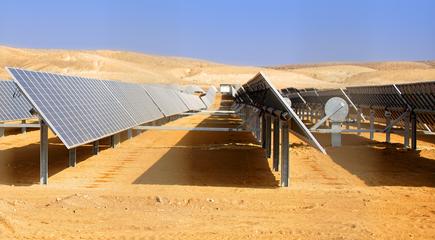Turning Wind Power into Ammonia: A Sustainable Solution

Wind power is the USA's leading source of renewable energy, offsetting 329 million metric tons of CO2 emissions each year. However, its expansion faces challenges like geographic limitations and transportation issues. Converting wind power to ammonia could solve these problems and offer additional environmental benefits.
Overcoming Transport Challenges
While wind turbines can generate power on-site, not all locations are suitable for wind farms due to factors like low wind speeds or space constraints. Connecting turbines to the grid is ideal but not always feasible. Batteries can store electricity but are limited in scale and duration.

Ammonia as a Storage Solution
Ammonia (NH3) is emerging as a viable alternative to batteries for storing wind energy. Unlike hydrogen, which requires extreme temperatures and pressures for storage, ammonia can be handled as a liquid at moderate pressures or temperatures as low as -33°C (-27°F). Thanks to its use in fertilizers over the last century, processes for both storing and transporting ammonia are well defined.
Ammonia can be burnt in an engine or used in a fuel cell to produce electricity, producing harmless byproducts like water and nitrogen. Some nitrogen dioxide is released but can be easily captured with a catalytic converter. It can also be broken down and purified to produce hydrogen gas.
Producing ammonia with the traditional Haber-Bosch process is cheap but bad for the environment. Depending on the environmental impact of its production, ammonia can be divided into three types:
- Gray Ammonia: Produced using fossil fuels, accounting for 1.8% of global carbon emissions
- Blue Ammonia: Similar to gray ammonias, but CO2 is captured to reduce the climate impact
- Green Ammonia: 100% renewable, produced using wind or solar energy to power electrolysis

Real-world Green Ammonia Applications
For a small-scale project, a Minnesota farm uses a wind turbine to power a chemical plant that creates green ammonia, which not only fertilizes the farm but also powers the tractor and heats the barns for drying grains. The system reduces the farm’s carbon footprint by 90%.
In Saudi Arabia, a large-scale project is producing green ammonia using solar and wind energy, with a goal of 1 million metric tons of green ammonia annually by 2025. In Japan, government funding is fueling local production and large-quantity imports of green ammonia. The country aims to convert all its coal-fired power plants to ammonia by 2050.
The Future of Ammonia in Energy
While ammonia is toxic, established safety protocols make it less hazardous than liquid hydrogen. Currently, green ammonia is two to four times more expensive than gray ammonia, but costs are expected to decline, similar to solar and wind energy.
Ammonia offers a promising solution for transporting and storing renewable energy. As research continues, it holds the potential to revolutionize many industries and significantly reduce carbon emissions.
Successfully generating, transmitting and storing renewable energy requires reliable and efficient gate driver solutions. SCALE-iFlex LT dual-channel plug-and-play gate drivers optimize the paralleling of power modules. This results in 20% more converter output power using the same hardware in wind, solar and energy storage applications. Watch this short video to learn more.





